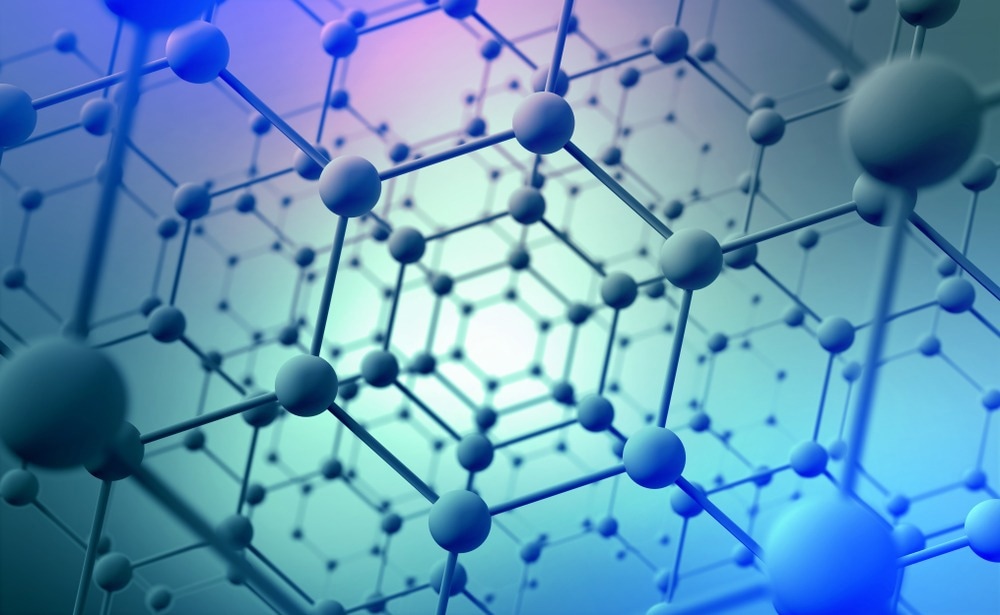Electronic and photonic devices have unique functionalities for converting chemical and biological processes into electrical or optical signals to detect, identify, and monitor these processes. Integrating nanotechnology concepts has led to various innovative optoelectronic designs that empower next-generation devices.

Study: Harnessing DNA Nanotechnology and Chemistry for Applications in Photonics and Electronics. Image Credit: Yurchanka Siarhei/Shutterstock.com
Deoxyribonucleic acid (DNA) is the molecule that stores and transmits genetic information in biological systems. These molecules are versatile substrates for chemical modification and functionalization, facilitating the attachment of nanocargoes at predetermined locations. DNA nanostructures have been used as templates for the fabrication of inorganic structures.
Although DNA molecules are promising building blocks for nanostructures, DNA-based optical or electronic devices have not yet been commercialized. A recent article published in Bioconjugate Chemistry discussed the potential applications of DNA nanotechnology in electronics and photonics through four case studies: quantum computing devices, carbon nanotube transistors, enzymatic fuel cells, and artificial electromagnetic materials.
DNA Nanotechnology and its Application in Nanofabrication
DNA nanotechnology has widened the applications of DNA molecules by applying them to assemble and connect structural motifs. These molecules have contributed extensively to the fields of nanoscience and nanotechnology and have revolutionized molecular self-assembly. DNA nanotechnology offers superior programmability to realize accurate self-assembly in three-dimensional (3D) structures and has evolved sufficiently to be commercialized.
In addition to its applications in engineering and physics, DNA nanotechnology has been exploited in biomedicine. DNA molecules tethered to nanocargoes or nanosurfaces have been frequently reported as highly functionalized nanoscale platforms.
In photonics and electronics, nanometer-scale platforms are fabricated using either top-down or bottom-up methods. Top-down approaches (such as electron beam lithography and photolithography) can produce sub-100 nanometers geometries with features of 20 nanometers. However, the inability to offer such characteristics on a centimeter scale at the same speed and affordability substantially restrict their applicability.
Alternatively, the application of DNA nanotechnology for nanofabrication enables the construction of 3D platforms via a combination of chemical reactions and nanoscale shapes, with scope for modulation. The present study sheds light on DNA nanotechnology involving processes through four case studies that have contributed immensely to photonic and electronic applications.
Quantum computing
A qubit is the simplest quantum system that enables information processing in quantum computers in radically different ways. Hence, qubit-based quantum computers are faster than classical computers and require a supporting component to stabilize and manipulate qubits. Although qubit-based quantum computers with silicon hardware have been hypothesized to be more advantageous than classical computers, their realization is challenging.
Few quantum information processing systems use Josephson junctions to create qubits. In this regard, DNA nanostructures can be used to assemble 3D arrays of Josephson junctions, which is otherwise unattainable using conventional methods, indicating the scope of DNA nanotechnology in fabricating quantum computing hardware.
Carbon nanotube (CNT) transistors
Structural DNA nanotechnology utilizes DNA molecules as programmable information-coding polymers to create high-order structures at the nanometer scale. For example, in DNA origami tiles, a long single-stranded viral genome (scaffold strand) is folded into arbitrary shapes using hundreds of short synthetic oligonucleotides (staple strands).
Previous studies have shown that templated metallization uses DNA origami tile as a substrate to fabricate interconnects in circuits. Additionally, DNA origami can be used as a template for conducting metal-semiconductor junctions, yielding complex metal nanostructures.
Furthermore, DNA origami tiles have also been used to arrange organic materials and polymers in curved patterns, which is beneficial for technologies such as wearable devices for health monitoring or bendable smartphones that require flexible electronic circuitry.
Enzymatic fuel cells or biobatteries
DNA nanotechnology has great potential for developing enzymatic fuel cells, wherein DNA-based hydrogels can be used as the medium.
DNA origami structures and hydrogels enable facile assembly under environmentally benign conditions compared with conventional devices that use dangerous materials. As scope for the future, researchers anticipate developing DNA hydrogel biobatteries with enhanced power density, energy, and longevity, by refining the electron transfer pathway and scrutinizing suitable enzymes/substrates.
Artificial electromagnetic material
DNA nanotechnology has several applications in the field of photonics. Nanocavities are used in quantum optical studies to confine light using subwavelength-scaled resonating modes. They require emitters to be placed at accurate positions. Gopinath et al. demonstrated that dye molecules targeted at different locations on a DNA structure within a photonic crystal cavity (PCC) enabled tunable emission based on the electric-field intensity of the PCC.
Another study by Kuzyk et al. used DNA nanorods as a substrate to link a gold nanosphere-based helical string to induce a chiroptical response. The left- and right-handed helices generated bisignate circular dichroism spectra.
Conclusion
Overall, a problem-driven approach, wherein the design of the device is guided by thorough knowledge of the demands of the target market and device specifications, would ease the translation of DNA nanotechnology research to the mark of commercialization. This approach could help to develop new innovative designs based on DNA nanotechnology that could be applied in photonics and electronics. Coupling it with efficient methods for scaling up at lower costs can be an additional advantage.
Reference
Dunn, K. E., Elfick, A. (2022). Harnessing DNA Nanotechnology and Chemistry for Applications in Photonics and Electronics. Bioconjugate chemistry. https://pubs.acs.org/doi/10.1021/acs.bioconjchem.2c00286
Disclaimer: The views expressed here are those of the author expressed in their private capacity and do not necessarily represent the views of AZoM.com Limited T/A AZoNetwork the owner and operator of this website. This disclaimer forms part of the Terms and conditions of use of this website.